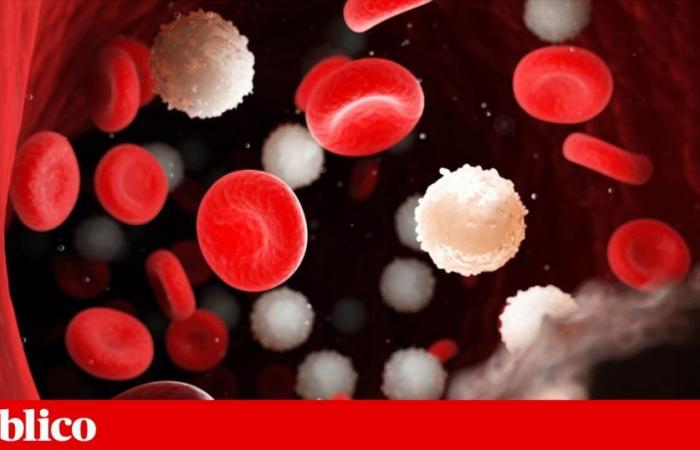There is no shortage of experiments and studies that try to unveil the “elixir of youth” or at least make cells and organs go back in time – and rejuvenate. The work of Irving Weissman, from Stanford University (United States), fulfilled this purpose: he rejuvenated the immune system of mice, enabling these older animals to respond effectively to new infections (with an effectiveness common in younger ones). Like most of these “time machines”, we are still far from being applied to humans, but that does not take away the merit of yet another scientific achievement against aging.
The results from the North American laboratory, now published in the journal Natureshow that it is possible to restore the immune system of an aged mouse, with several characteristics associated with aging receding over time: the production of blood cells is rebalanced, inflammation is attenuated and there is even an increase in immunity (tested through an infection viral).
“Many laboratories, including ours, discovered about 20 years ago that young mice had stem cells that produce blood cells that tend to create more lymphocytes than myeloid cells”, explains Irving Weissman to PÚBLICO.
Lymphoid cells create lymphocytes, which are responsible for identifying and responding to antigens or molecules foreign to our body (such as cancer cells or infections), while myeloid cells produce other cells in our blood, such as red blood cells and macrophages (which “eat” and kill dangerous cells). Both lymphoid and myeloid are also known as hematopoietic stem cells, something that is not strange to the 84-year-old American scientist. After all, Irving Weissman is one of those responsible for identifying these cells and their role in blood cancers.
Norbert von der Groeben/Stanford University
All of these cells are relevant to the functioning of our immune system – they are the defense arsenal of the human body (and other animals, such as mice). “The hematopoietic stem cells of young mice produce more lymphoid cells than myeloid cells, while in older mice they form more myeloid cells”, compares Irving Weissman. This may be one of the reasons why new viruses, or variants of these viruses, are more violent towards older people. “Old” lymphocytes have a memory of infections or vaccines, but, with the drop in their production, in older organisms there will not be enough lymphocytes to learn and create immunity against new pathogens.
“The decrease in the production of lymphocytes causes us to have less adaptive immunity and less protection against infections, while the increase in myeloid cells causes inflammation, which then promotes other diseases, such as blood cancers”, states Elsa Logarinho, researcher in the field of aging from the Institute for Research and Innovation in Health (i3S) at the University of Porto and who did not participate in the study at Stanford University.
Hence the results are exciting. These first tests, on mice, made it possible to “replace” an aged immune system, from mice around 20 months old (something equivalent to 60 years in humans), with a young one. And, of course, the targets used in mouse cells to attenuate the presence of myeloid cells also exist in human cells, opening the door to their transposition to humans in the future. But we are still several steps away from that possibility.
The vaccine test
Researchers used immunotherapy to go back in time. After identifying several markers (a kind of signals) on the surface of hematopoietic stem cells, which tend to give rise to myeloid cells in older mice, they created antibodies that were attracted to these markers. Thus, and with the help of other antibodies, they discovered that it was possible to “empty” these stem cells that predominantly produce myeloid cells and, thus, recover balanced hematopoietic stem cells – which produce lymphoid and myeloid cells more equally.
And so we go back in time. From an older phase, in which the production of myeloid cells dominates the immune system, to a young phase, in which this production is balanced or even favors lymphoid cells. “As we age, there is a favoring of myeloids”, summarizes Manuela Ferreira, researcher at the Center for Neuroscience and Cell Biology at the University of Coimbra.
The research studied this emptying of myeloid cells, realizing that the effects appeared 16 weeks after the application of immunotherapy, that is, “the immune system is balanced four months later”, as Elsa Logarinho says. After proving that there was a reversal in aging characteristics of the immune system – such as reduced inflammation or decreased myeloid cells –, there was still no proof that everything is operational.
The proof came with a vaccine. To know that an immune system is working, we have to test it with a new infection. And, being a younger system, its learning about a new virus will theoretically be more effective. So the next experiment involved giving mice a vaccine against a virus they were infected with six weeks later.
“Old animals, which are normally very weakened by this type of infection, and in which the vaccine has difficulty providing the necessary protection, with this depletion [o tal esvaziamento] A preview of pro-myeloid stem cells can reverse these difficulties and increase immunity”, explains Elsa Logarinho.
So far, everything has worked as indicated by the investigation led by Irving Weissman. There is still a lack of pre-clinical and clinical studies to understand whether this approach can be successful in humans. For example, one aspect that will be important to understand is its impact on longevity. The study focuses on this first phase of how immunotherapy works to attenuate the presence of myeloid cells, but in the future, with a long-term study, it will be relevant to understand its impact on other organs of an animal, its impact on the animal’s longevity or what is the ideal age to apply the therapy (whether it would be advantageous to be earlier or not).
Manuela Ferreira highlights the need for a longer study. “We need to go further. Namely, we need to understand whether these antibodies will be specific in the human system and whether they affect other immune cells, so that there are no side effects,” she says. Elsa Logarinho is more optimistic: “For now, I still haven’t identified the ‘otherwise’, other than the difficulties in confirming how robust these surface markers are. in humans.”
It remains to be seen if there are risks
Another relevant issue is the potential problems associated with this increase in lymphocyte-producing cells. Yasar Arfat Kasu and Robert Signer, researchers at the University of California, point out, in a comment on this work also published in the journal Nature, that increased production of lymphoid cells in older adults may contribute to an increased risk of cancers, such as leukemia. “However, the burden of an increased risk of lymphocytic leukemia could be offset by greater protection against infections and a reduced risk of other cancers, which would be provided by improved immune surveillance,” the researchers add.
Regarding the increased chance of developing malignant tumors, Irving Weissman notes that the ongoing work could protect against leukemias caused by myeloid cells (since it mitigates their presence), but also against lymphoid leukemias, as it could help find a way to also mitigate lymphoid cells. Lymphoid leukemias or myeloid leukemias are rare and aggressive blood cancers, the first being more common in children and the second in adults. – also a result of the predominance of these cells at different stages of life.
This is an area that still has many doubts – and is in a very experimental phase. Elsa Logarinho says that, although no hypothesis can be excluded, this is not a risk that is currently part of the equation. “For example, B lymphocytes are closely associated with lymphomas or leukemias and, in this article, these aging B lymphocytes (which increase the risk of lymphomas and leukemias) are also mitigated with this approach. In fact, it can even provide protection against the incidence of these tumors,” she says.
Manuela Ferreira adds that there is a need to understand the “molecular mechanisms that can also serve as a therapeutic target, especially to understand which signaling pathways and molecular axes are at the basis of this bias towards myeloid cells”, that is, to discover what leads to this bias to correct it at the root.
The search for the “elixir of youth” has been going on for decades. There are studies dedicated to the intestine as a gateway to this rejuvenation, others based on substances such as taurine or gene therapy. “We are still getting started”, reinforces Manuela Ferreira. But this is yet another attempt to give humans healthier aging. In the coming years (or decades), we may have more answers.
Tags: Scientists gave mouse young immune system time Immunotherapies
--





